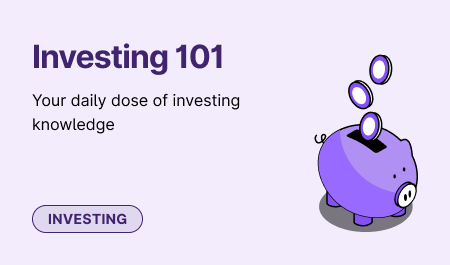SEBI's Riskometer

Established in 1988, SEBI, or the Securities and Exchange Board of India as it is more commonly known as a regulatory body
- an organization or agency that is responsible for overseeing and enforcing rules, laws, and regulations to regulate the securities market in India and protect the interests of investors.
SEBI was created in response to a series of financial scandals in the 1980s, highlighting the need for a regulatory body to oversee the securities market. Since then, SEBI has played a vital role in shaping the Indian financial system, and its influence extends beyond just regulating the securities market.
However, great power comes with great responsibility, and investing also involves taking risks. This is where SEBI's Riskometer comes into play.
In this article, we will take a closer look at SEBI's Riskometer, how it works, and why investors need to understand the risk level of their investments. We will also discuss how investors can use the Riskometer to make informed investment decisions and minimize risk exposure. So, let's dive in and explore the world of SEBI's Riskometer.
What is SEBI's Riskometer?
SEBI's Riskometer helps investors understand the risks associated with mutual funds. By comparing the risk of different mutual fund schemes, investors can make informed investment decisions based on standardized and easy-to-understand ratings.
The Riskometer is a visual representation of the level of risk associated with a mutual fund scheme. The risk level is depicted on a scale of 1 to 5, with 1 being the lowest risk and 5 being the highest risk. The Riskometer is usually displayed in the mutual fund's offer document, and it can also be found on the SEBI website.
The Riskometer considers several factors when determining the risk associated with a mutual fund scheme, including the volatility of the scheme's underlying assets, the concentration of assets in a particular sector or company, and the liquidity of the scheme's investments. It also considers the scheme's historical performance and the experience and track record of the fund manager.
The SEBI Riskometer uses a colour-coded system to indicate the level of risk associated with a mutual fund scheme.
The colour codes and their associated risk categories are:Blue colour code: represents low-risk mutual fund schemes that invest in low-volatility instruments like government securities and bonds, making it a relatively safe investment with minimal short-term risk of losing money.
**Green colour code:** This indicates a moderately low-risk scheme. Equity and debt instruments are invested in these funds.
**Yellow color code:** A mutual fund scheme with moderate risk. Higher volatility equity and debt instruments are included in these funds. It is more likely that these funds will lose money in the short term than those with a green or blue colour code.
**Brown colour code:** This indicates that the mutual fund scheme is high-risk. These funds invest primarily in equity instruments, which are more volatile than debt instruments.
**Red colour code:** This indicates that the mutual fund scheme is very high-risk.
SEBI's Riskometer provides a standardized and easy-to-understand rating system that enables investors to compare the risk level of different mutual fund schemes and make informed investment decisions.
How to use the SEBI Riskometer?Look for the Riskometer: Mutual fund companies or SEBI have websites displaying the Riskometer in their Key Information Memorandum (KIM).
**Identify the colour code**: Identify the colour code of the mutual fund scheme you are interested in.
**Understand the associated risk category**: Read the description of the risk category associated with the colour code of the scheme you are interested in.
**Compare with other schemes**: Choose one that aligns with your investment goals and risk tolerance.
**Keep reviewing:** The Riskometer is dynamic, and the colour code of a scheme may change over time based on market conditions. Consult a financial advisor to ensure your portfolio aligns with your investment goals.
Benefits of using SEBI's Riskometer:Standardization:
SEBI's Riskometer provides a standardized rating system that makes it easy for investors to compare the risk level of different mutual fund schemes.
**Transparency:** Riskometer clearly indicates the risks associated with mutual funds.
**Accountability:** If a scheme's risk level changes, the fund manager must inform investors and update the Riskometer accordingly, this promotes overall responsibility.
**Ease of Use:** The colour-coded system makes it easy for investors to assess the risk level of a mutual fund scheme quickly.
**Risk Management:** Using the Riskometer, investors can choose mutual fund schemes that align with their risk tolerance. Investment decisions can be avoided by avoiding emotional choices.
Limitations of using SEBI's Riskometer:
Here are some of the limitations of using the SEBI's Riskometer.
**Data bias:** The Riskometer uses historical data and may not reflect future risks accurately. A mutual fund's past performance may not be a reliable indicator of its future performance.
**Limited scope:** The Riskometer does not consider other risks such as credit, interest rate, or liquidity risks.
**Lack of customization:** It needs to provide a customized risk assessment for investors based on their investment goals and risk appetite.
**Overemphasis on short-term risk:** Investors with a long-term investment horizon may not find the Riskometer valuable because it emphasizes short-term risks.
**Non-uniform assessment:** The Riskometer is a self-assessment tool and the fund houses are responsible for determining the colour code based on their evaluation. This may lead to inconsistent assessments across different fund houses.
Conclusion
The SEBI's Riskometer is a useful tool for investors as it helps them understand the risk level associated with a particular mutual fund scheme and make informed investment decisions. However, it is important to note that the Riskometer is just one factor to consider when making an investment decision. Investors should also consider other factors, such as their investment goals, investment horizon, and risk tolerance, before making any investment decision.